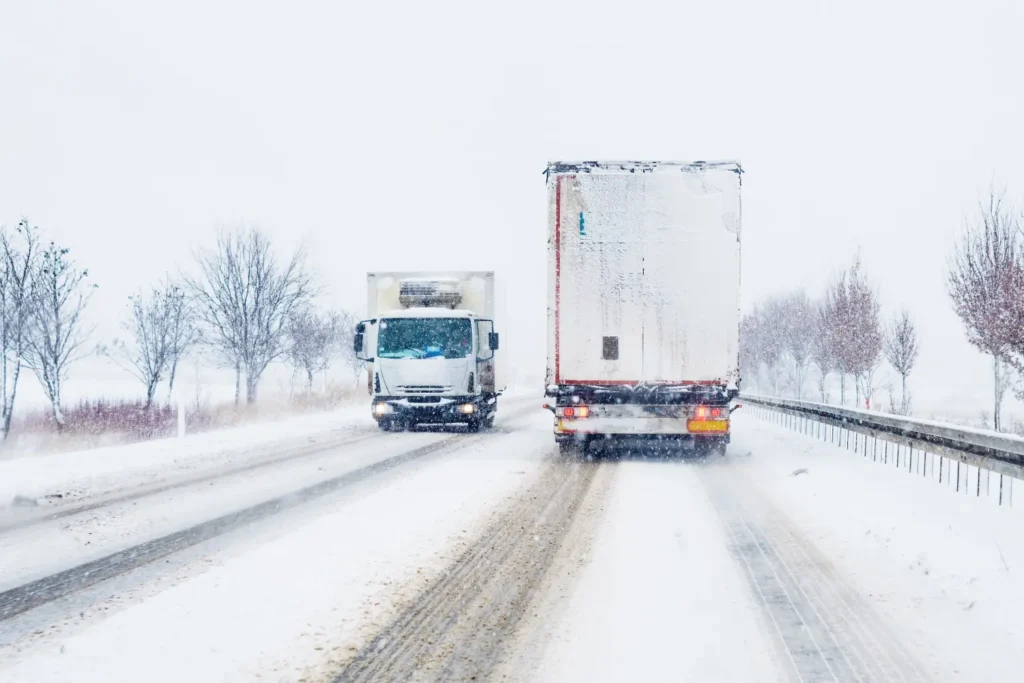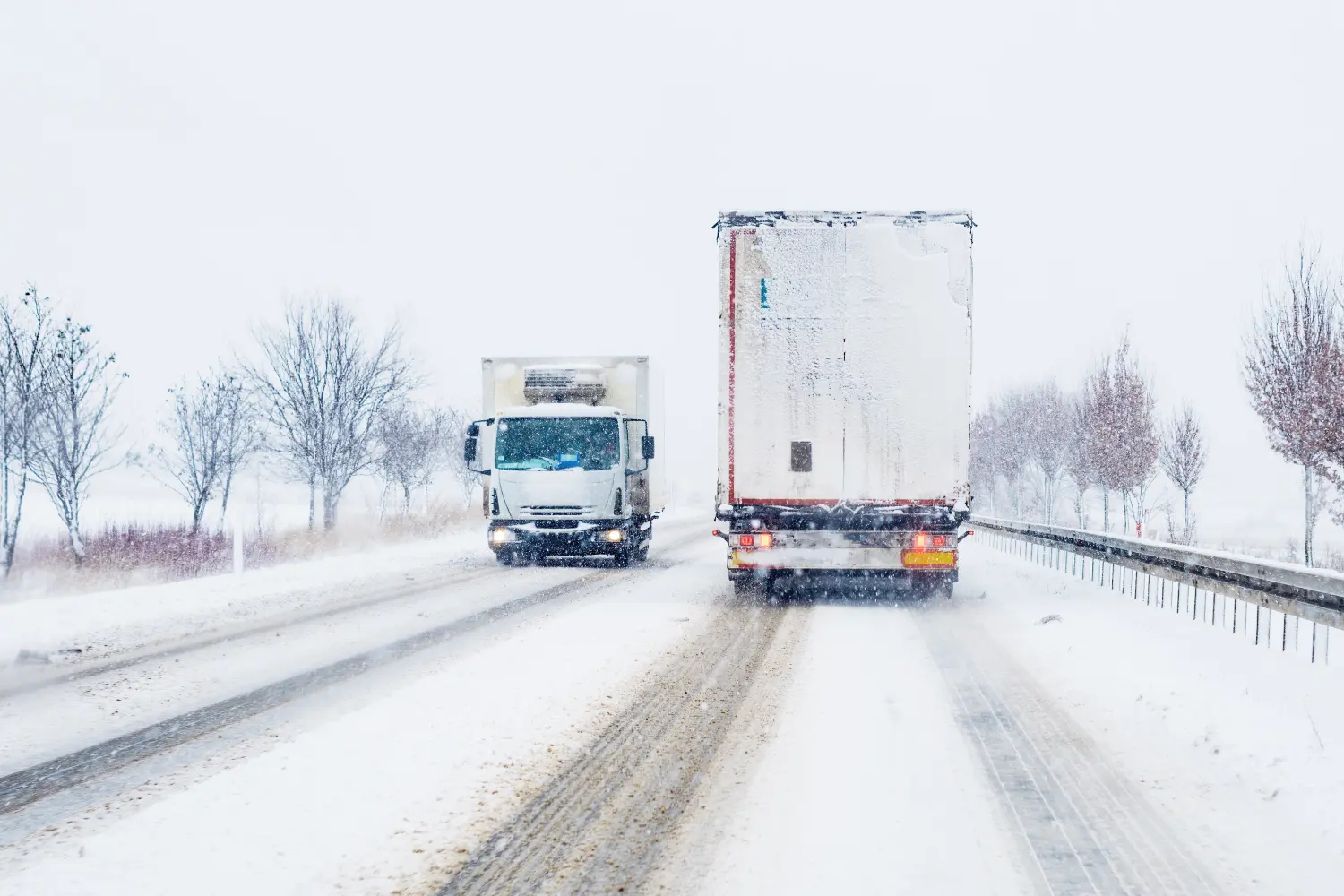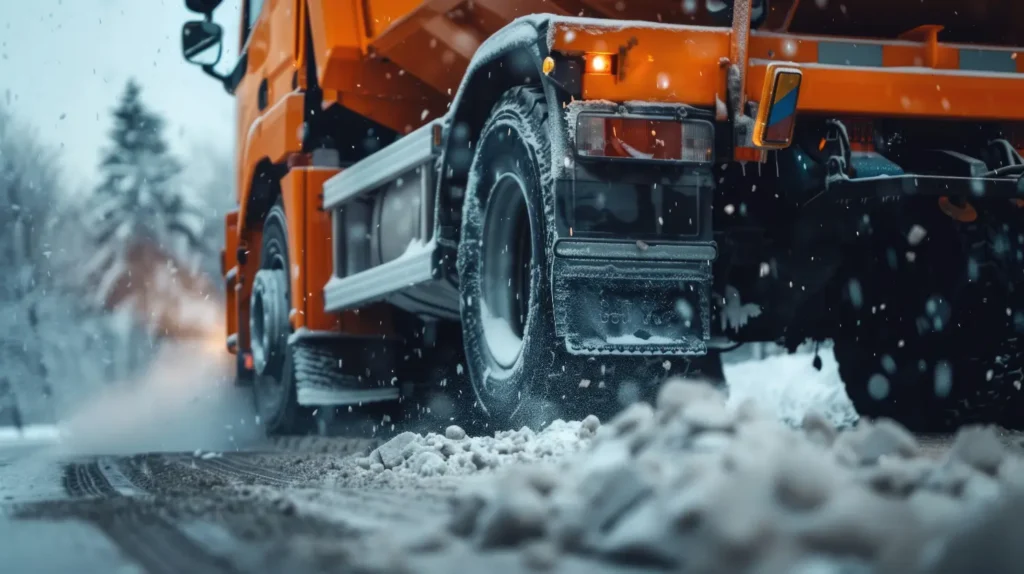Even a little adverse weather can greatly affect transportation and logistics across the country.
Just a little light rain can reduce average traffic speeds by up to 13%, while heavy snow can reduce average speeds by up to 40%, massively slowing down and hindering logistics.
When this snow builds up on critical roads and transport links, traffic speeds don’t just slow down – they grind to a halt. This snow accumulation is devastating for the UK’s transport and logistics, and every winter trucks, trains and other transport vehicles are slowed down massively by the obstruction.
This is why gritting roads, removing snow, and enhancing our nationwide transport infrastructure is vital for ensuring goods and services across the country can get where they need to be.
We’ll be exploring exactly how snow accumulation can effect transport and logistics, along with the best strategies to mitigate the impact of snow on logistics, and how we can use new technologies and innovations to help clear snow quicker and improve logistic operations.
Here’s what you need to know.
Understanding Snow Accumulation and Its Effects on Transport
An accumulation of snow – whether it be on roads, residential areas, or any other surface, occurs when snow falls faster and in more volume than the rate at which it melts or sublimates.
This can of course be altered by human acts – gritting and ice melter materials help lower the freezing point of water, helping snow melt faster as it reaches the ground. Regardless, if the snowfall is heavy enough this preventive measure isn’t always enough.
Government reports suggest that snow storms can cost the UK between £200 to £300 million pounds per event, due to shutting down logistics alongside halting overall business activity.
Across the board, a build up of snow severally affects all aspects of transport. Heavy snowfall and snow storms make air travel impossible with low visibility, high winds and slippy runways.
Meanwhile, road and rail travel can both be directly blocked off by piles of snow, or simply hindered by snowfall that lowers visibility and decreases road or rail traction making travel dangerous.
Even sea travel can be affected, icing over ports and making coastal waters more dangerous and difficult to navigate.
Challenges Faced by the Logistics Industry During Snow Events
As many other industries move online with zoom calls and remote work, the logistics industry remains one of the most severely affected industries by snowy weather and adverse winter conditions.
Even a relatively small delay across a fleet of trucks can have huge knock-on affects down to logistics chain, causing missed deadlines, unfulfilled orders, and even spoiled perishable goods.
Worse, these delays can often require alternative and more expensive transportation methods to speed up delivery, giving mounting costs for logistic companies just to carry out standard operations.
Increased snowfall and snow accumulation also brings on other increased costs such as more fuel consumption due to lower speeds, increased labour costs to cover overtime and emergency staff, and the need to employ snow removal services.
All of this is not to mention increased safety issues for drivers and workers operating in dangerous conditions.
A particularly bad snowstorm in January of 2013 was estimated to cost the UK around half a billion pounds, showing just how severe a single day of snow accumulation can be for national economies, yet alone individual businesses.
Strategies to Mitigate Snow Impact on Logistics
Mitigating the impact of snow storms and snow accumulation on logistics comes in two waves. The first and often the most effective method is taking preventative measures.
Preemptive Measures and Planning
Well before the first snowflake touches the ground, you’ll want to have robust plans in place to combat snowy conditions.
Starting with ensuring you have access to accurate and cutting-edge weather forecasts and monitoring systems, you’ll want to have detailed route planning with pre-established adjustments and alternate options should major transport links become blocked with snow.
You may also want to consider giving yourself some inventory leeway.
While many businesses operate with a just-in-time inventory system for increased efficiency, when snow is anticipated it’s good practice to increase vital stockpiles in key areas to stay ahead of possible transport disruptions.
On-The-Ground Tactics
Once the snow hits, it’s important to act fast.
Where you’re able to do so, you’ll want to employ snow removal and gritting specialists to clear key access points and logistical hubs to keep you above water as public roads also begin to get cleared.
You can also invest in snow-resistent vehicles and equipment such as using all-wheel drive vehicles or fitting specialised winter tyres to increase traction in snowy conditions.
Maintaining a good relationship with with local authorities and emergency services is also important, helping improve coordination in getting critical transport infrastructure usable again, as well as rescuing any stuck vehicles as soon as possible.

Technologies and Innovations Enhancing Logistics in Snowy Conditions
While the logistics industry can’t simply switch to video calls when it starts snowing, new technologies are slowly improving the way adverse weather is tackled.
Advanced weather forecasting helps companies plan further and further ahead, while the IoT (Internet of Things) technology helps facilitate smart logistics with real-time tracking of shipments, allowing you to be more dynamic in responding to snowy weather.
Newer technologies such as autonomous vehicles and drones also offer a glimpse into the future possibilities of logistics, making avoiding poor road conditions possible with last-mile drone deliveries or reducing accidents with autonomous vehicles.
Conclusion
Heavy snowfall is the last thing any logistics supplier wants to see in the weekly weather forecast.
Yet hope is not lost.
Through thorough planning and preventive measures, you can be well prepared for whatever the weather throws at you, while maintaining a good relationship with a trusted snow removal and gritting provider can make your life even easier.
This is where AccuGrit can help.
As the UK’s leading snow removal and gritting provider, AccuGrit is perfectly placed to keep your transport hubs and links open through any weather. Contact us today to find out more!


